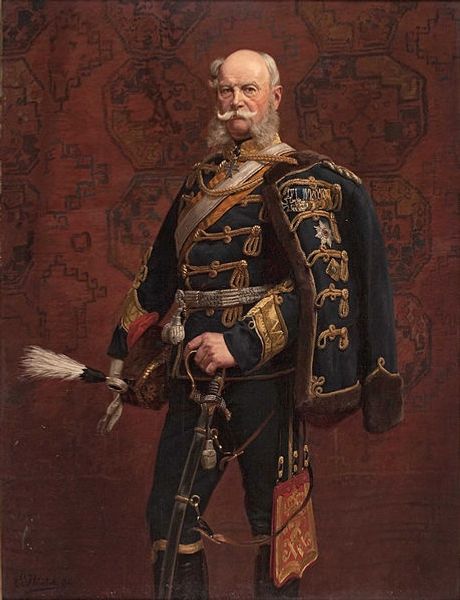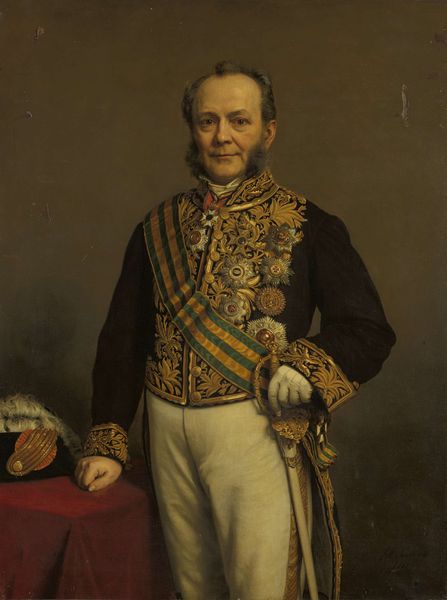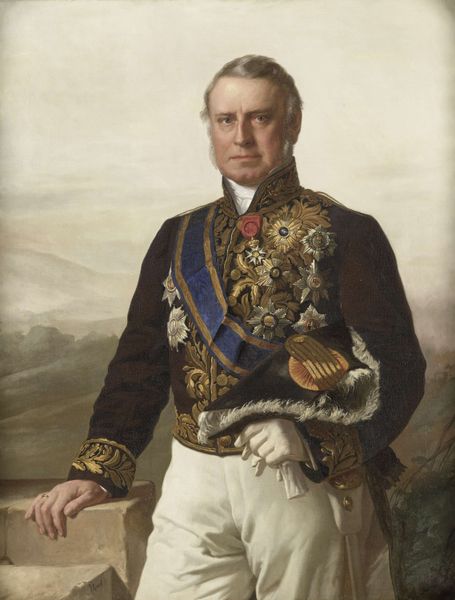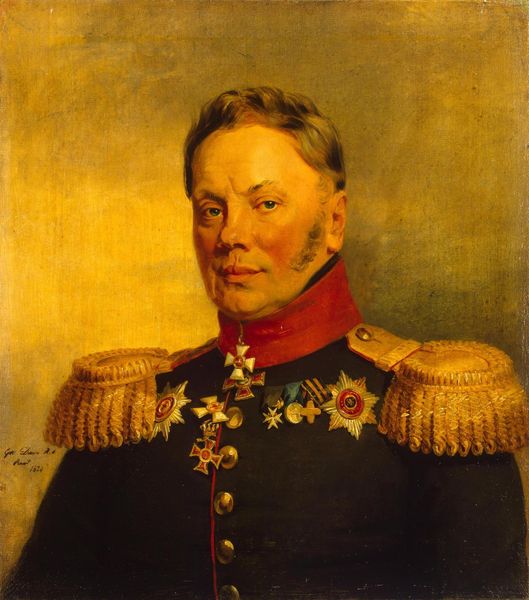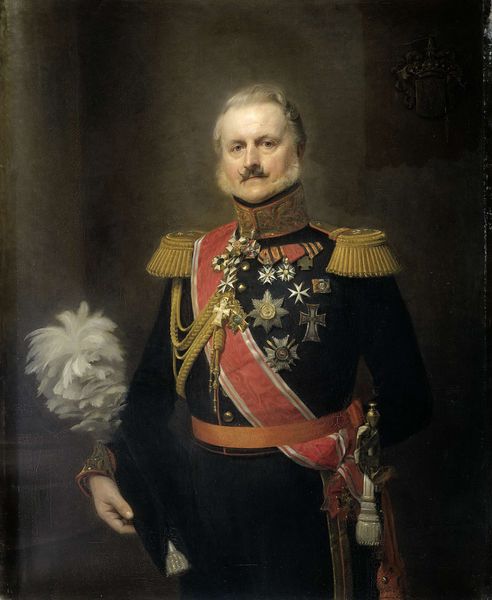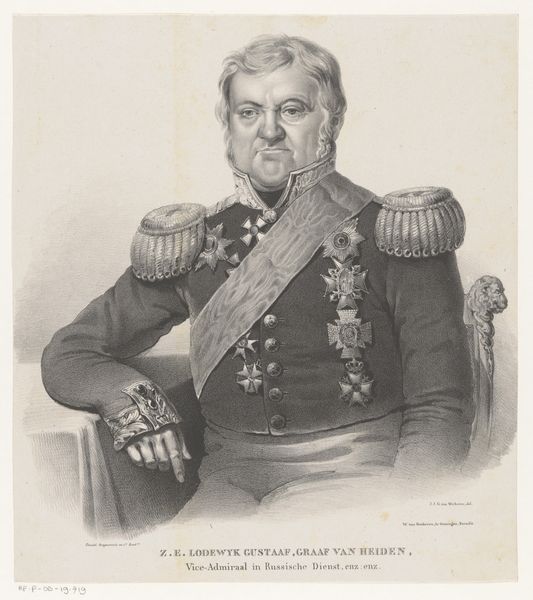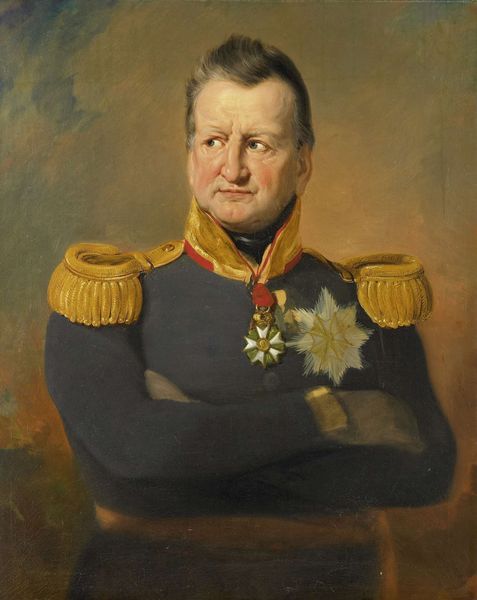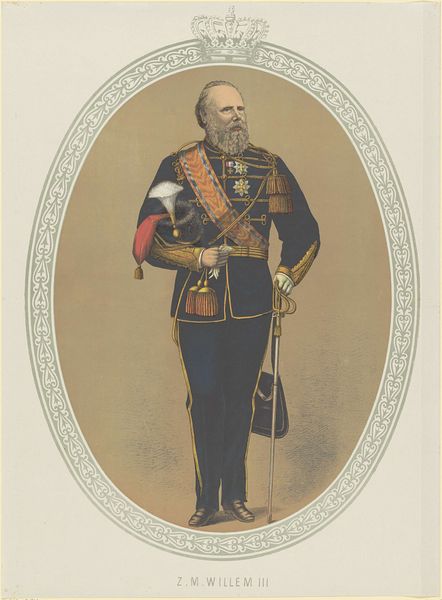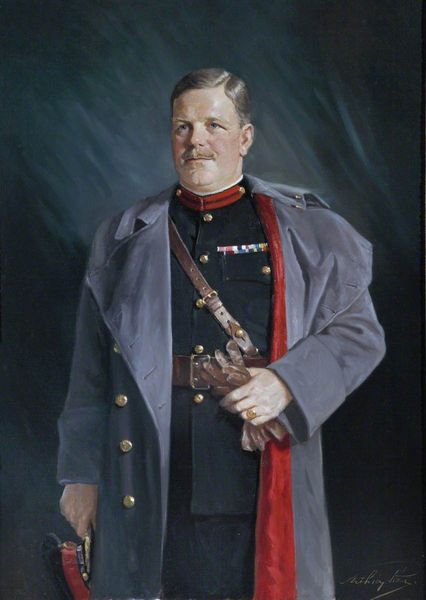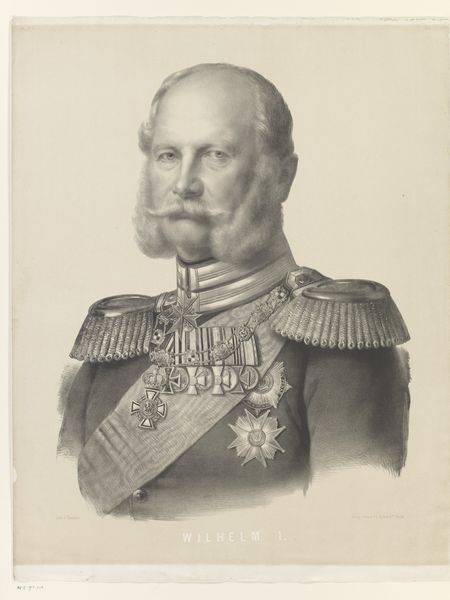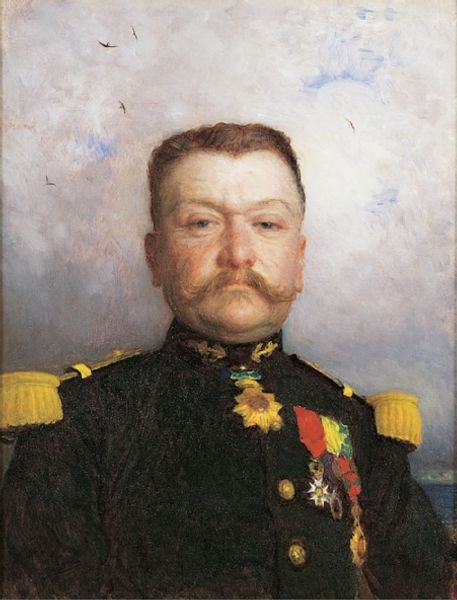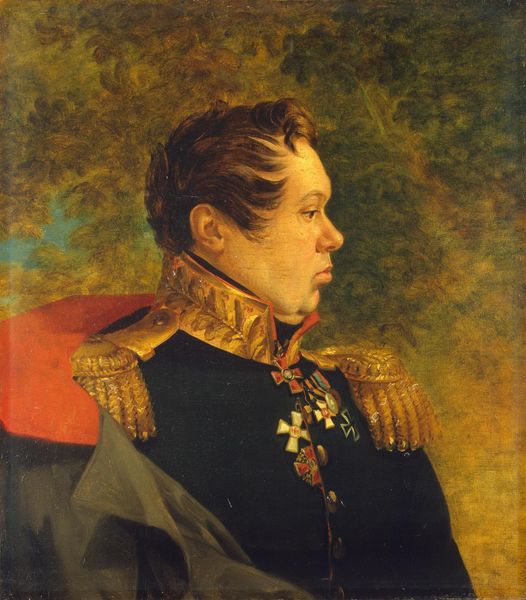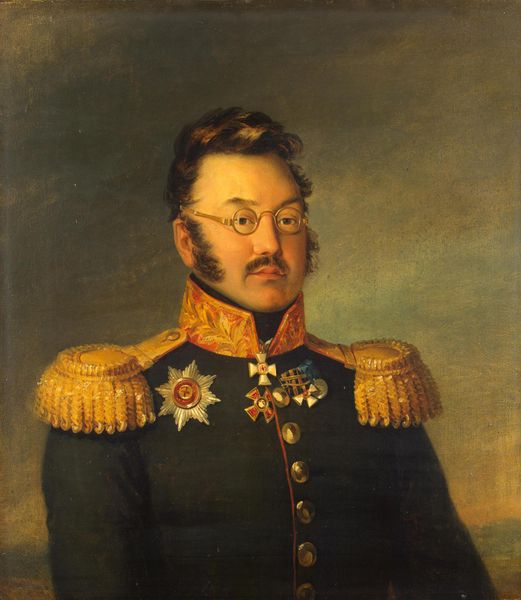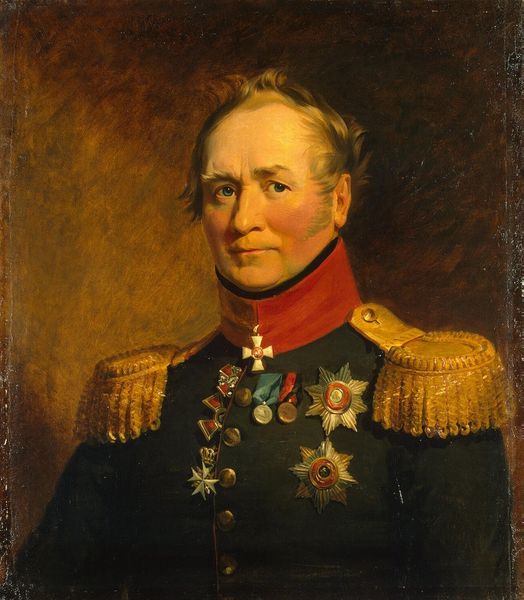
Bernhard (1792-1862), hertog van Saksen-Weimar. Generaal in Nederlandse dienst 1840 - 1862
0:00
0:00
jacobspoel
Rijksmuseum
Dimensions: height 133.5 cm, width 100 cm, depth 14 cm
Copyright: Rijks Museum: Open Domain
Jacob Spoel completed this oil on canvas portrait of Bernhard of Saxen-Weimar sometime in the mid-19th century. Though seemingly traditional, the portrait invites us to consider the means of production involved in its making. Paint, after all, is not a naturally occurring substance. It’s a complex mixture of pigments, binders, and solvents, each requiring extraction, processing, and distribution. The canvas itself is woven from fibers, likely linen, involving agricultural labor and textile manufacturing. Spoel’s technique is academic, carefully rendering Bernhard’s likeness and the details of his military regalia. Consider also the social context of this work. Bernhard, a Duke and General, represents a system of power and privilege. Spoel, as the artist, occupies a different position, dependent on patronage and skill to create this image. Looking at the painting, think about these relationships. Who had the power to commission and own such a work? Whose labor made it possible? By considering the materials, making processes, and social dynamics involved, we can gain a richer understanding of this portrait and its place in history.
Comments
No comments
Be the first to comment and join the conversation on the ultimate creative platform.
